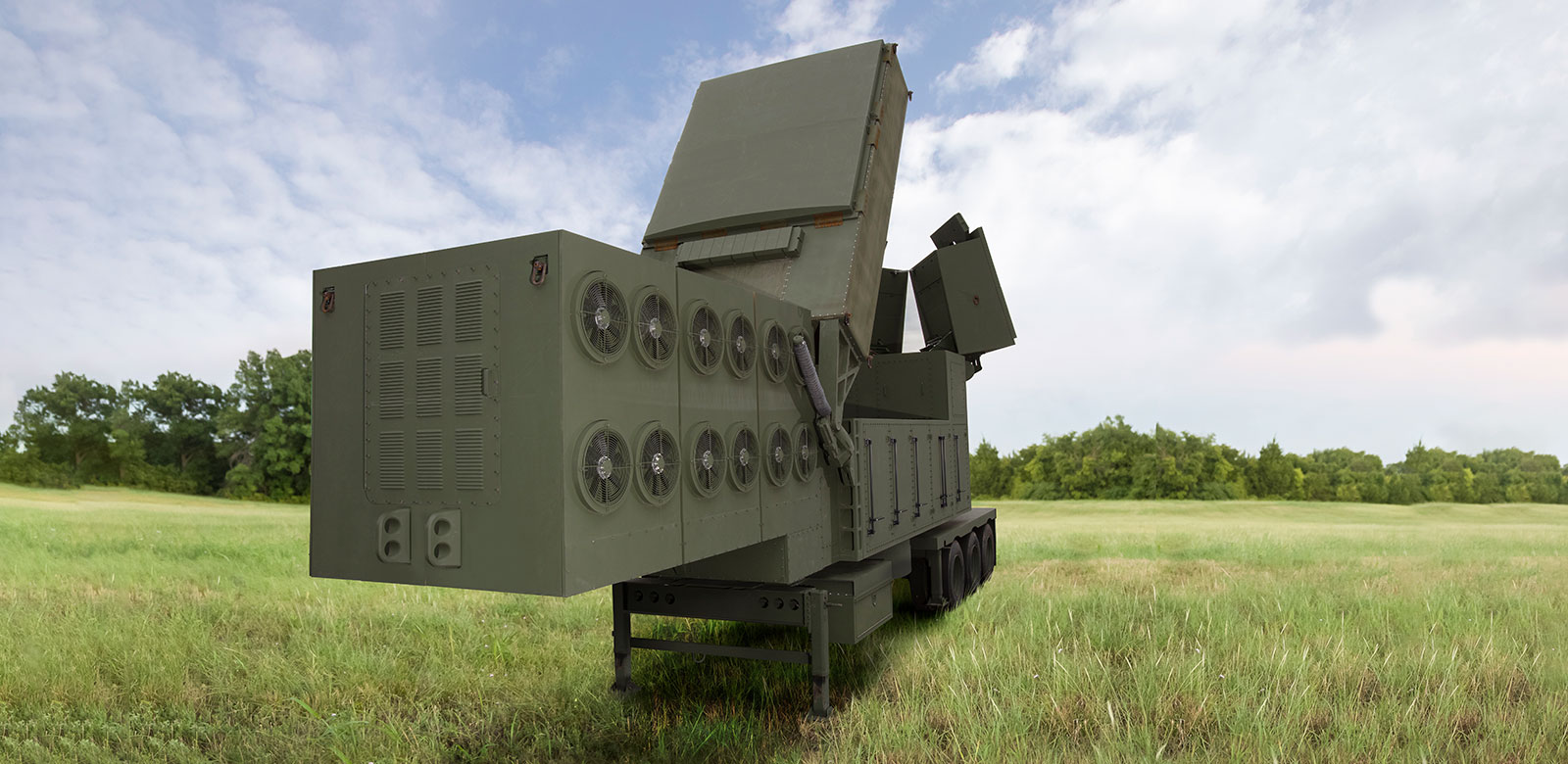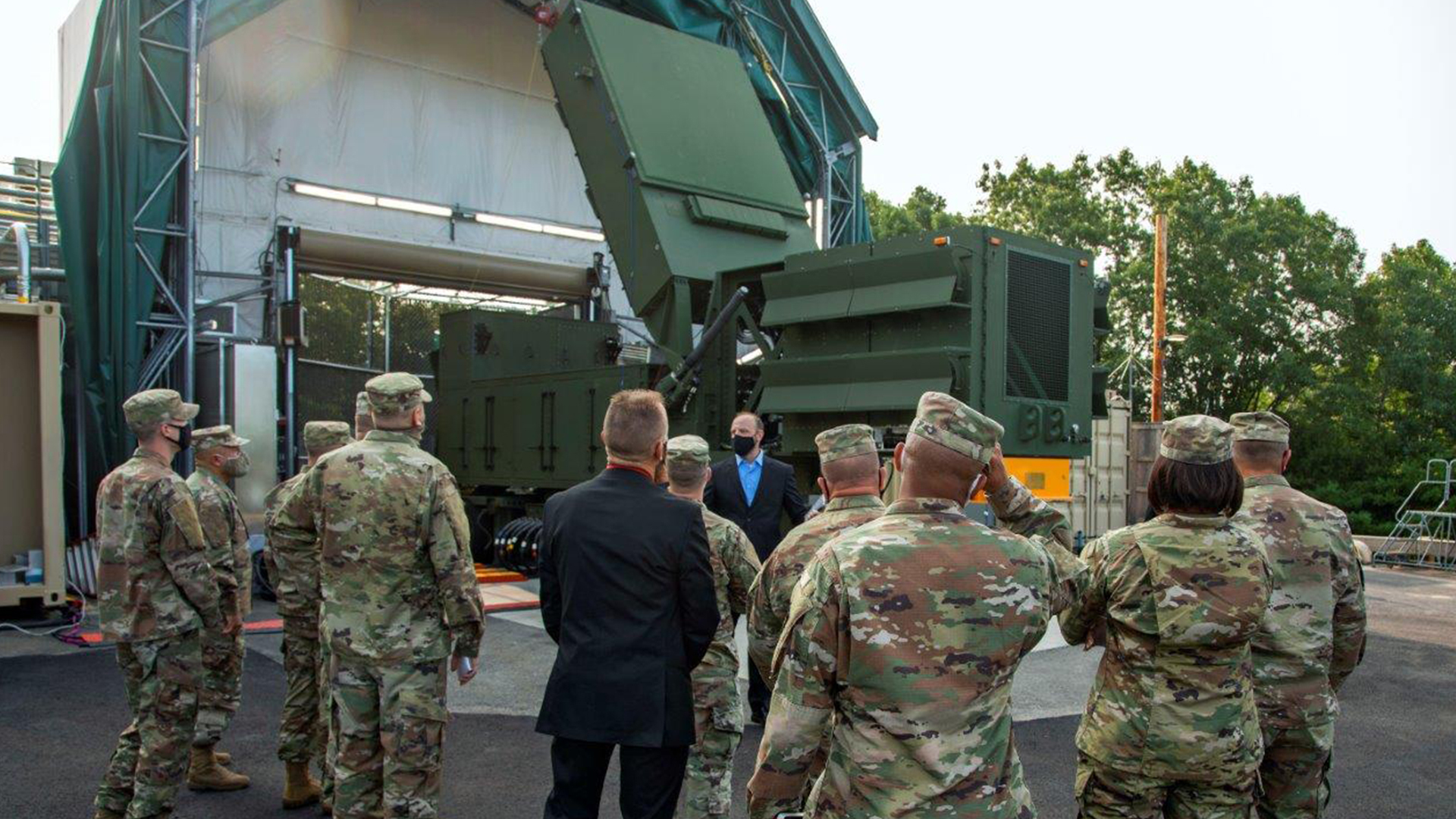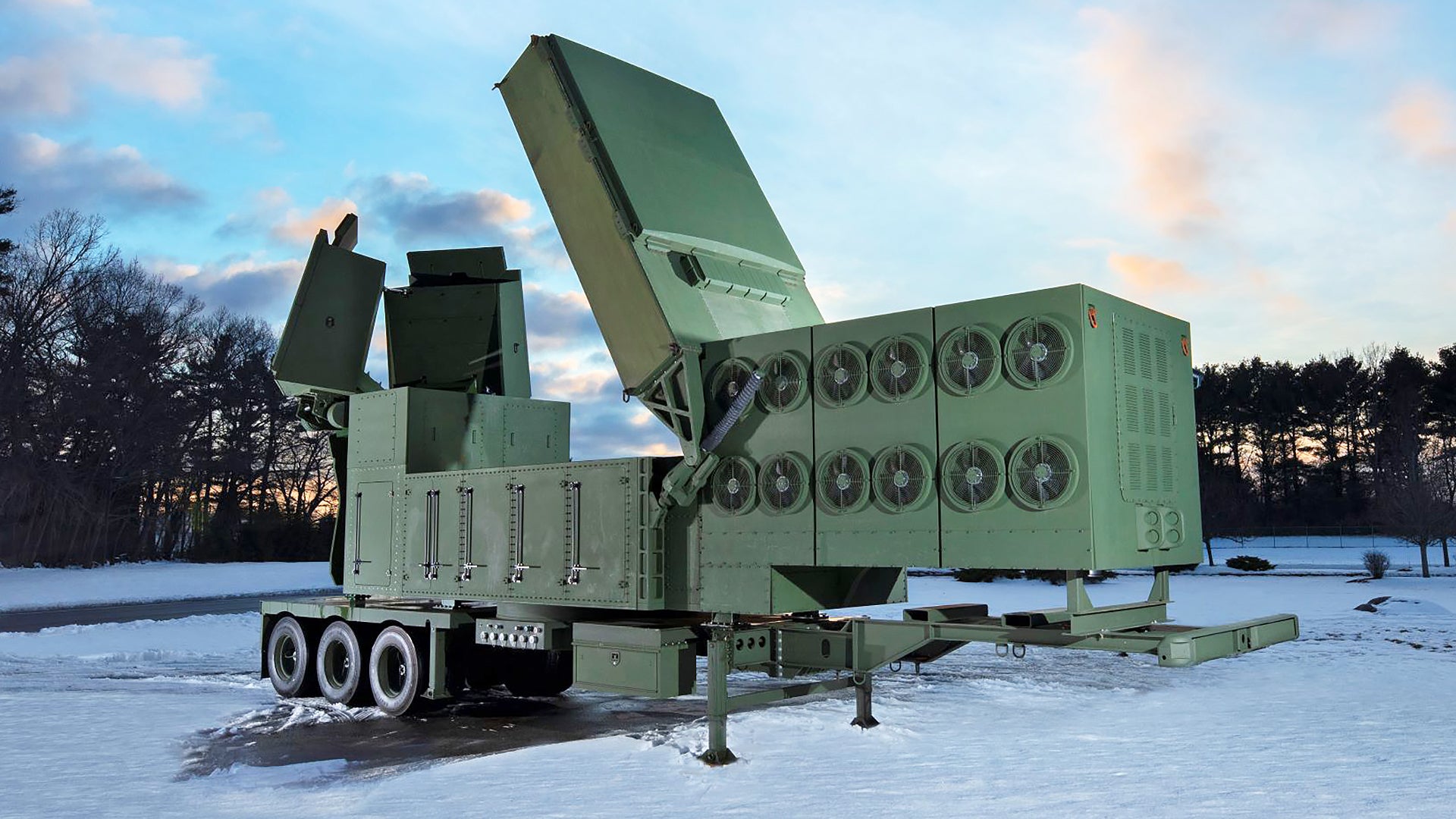The battlefield of the 21st century presents an evolving, dynamic, and increasingly-complex problem set to military commanders and strategic planners. While counter-insurgency operations have dominated in recent decades, the U.S. Army has to prepare for the next conflict that could emanate from the actions of a state-sponsored group, a rogue state, and especially a very well-equipped peer/near-peer force. This makes preparing for what conflicts could emerge in the future challenging, to say the least.
This paid article was produced by the Brookline Media Advertising Content Team in partnership with Raytheon.
One of the ways to ensure the Army is ready for any of these possibilities is to skip a step, or several steps ahead technologically by designing a system that not only solves the strategic needs of the current fight, but is advanced enough to counter several future generations of near-peer weapons evolutions. In turn, this offers defense planners the strategic ‘breathing room’ to prepare for whatever comes next.
The Army’s new Lower Tier Air & Missile Defense Sensor (LTAMDS) is focused on doing just that, giving US commanders and soldiers a radar system so advanced that it has the capability to identify, analyze, and assist with the neutralization of a wide array of potential threats, whether they be UAV drone swarms, ballistic missiles, hypersonic weapons, or fighter jets before they ever have a chance to reach their target.
The LTAMDS is being built by Raytheon Missiles & Defense, the company that also gave American warfighters legendary weapon systems like the AMRAAM air-to-air missile, the TOW anti-tank missile, and the Tomahawk cruise missile.
This radar, tailored to a new era of highly dynamic warfare, looks to the future while also ensuring the past by advancing on legacy weapon systems like the Patriot Air Defense System—another Raytheon product. It will provide early detection against enemy threats with more warning than ever before, providing more time for those threats to be engaged successfully, while also allowing any friendly personnel in the potential target zone to find cover or execute other countermeasures.

Recently, we sat down with Robert (Bob) Kelley, the Raytheon Missiles & Defense Director for US Requirements and Capabilities. As a former air-defense officer in the US Army, Bob has been on both the user and the development side of some of the most integral components of America’s air and missile defense network, and was the perfect individual to explain some of the most interesting parts of the LTAMDS program.
What follows are excerpts from that interview.
Justin: Before we go into the radar, can we establish the threat paradigm a little bit more? What exactly are we facing?
Bob: All right. Well, let me give you just a little bit of background upfront. When I was a second lieutenant in the air defense artillery, my biggest threat was probably, at the time, was a third gen fighter, or a helicopter. We were worried about Russian MiG airplanes and Russian helicopters. A second lieutenant in 2021 on the battlefield is worried about fifth gen fighters, far more advanced helicopters, UAS’s. They’re worried about cruise missiles, tactical ballistic missiles.
Even in 1990, when I came on active duty before Desert Storm, nobody really talked about tactical ballistic missiles until they were fired at Saudi Arabia. Now you’re starting to think about not just all these different aerial attack techniques, but that they can be put together in time and space.
If you remember September 14th, I think it was 2019, the attack on a Saudi Arabian oil refinery? That came from 360 degrees, it was near-simultaneous, and ended up on the target.
So, we make the Patriot system, and it’s very, very good. It’s a combat-proven system. Some of our partners are firing Patriot missiles every day in defense of their homelands. But it was developed during a time of linear battlefields.
Now we’re starting to look at things like hypersonic weapons. When they looked at tomorrow’s challenges, the Army determined they needed a new system to handle them. And so they put in the requirements for a 360-degree radar that could handle today’s threats and then provide threat overmatch way out into the future. That’s how you ended up with LTAMDS. The Army is thinking about the threats of the future.

Justin: What do you think of the lower tier, the UAS threat, in conjunction with the hypersonic threat. And does the LTAMDS deal with both of those or is that part of the integrated system you intend to provide or integrate with?
Bob: They don’t even have to be armed UAS’s. If you have UAS’s flying over your sites, they’re providing precision guidance to other armed weapons systems. If you look at the way adversaries can use UAS’s, they may not be armed. None have to have any kinetic or explosive on them. They can just have cameras and it allows an adversary to take out an entire armored battalion in less than a minute.
Justin: Can you explain what makes hypersonics such a big threat in the future versus conventional missile systems? What does LTAMDS do to counter that?
Bob: All I can really say in that area is that they’re fast. They’re very fast. If you want to intercept something that’s going at a speed like that, you’re going to have to detect and track it at a much longer range than, say, radars of the 1990s could.
Justin: You will need time to launch an interceptor or some other kill vehicle.
Bob: Yeah. Because again, a radar has got to go through that whole process of search, track, classify, discriminate, and identify. At the end of the day, it’s a human being sitting inside a van or a command-and-control system somewhere that’s going to make a decision on whether or not to engage. The radar is not going to decide. The faster objects are coming at you, the less time you have to make those decisions, so your radar has to really be able to see further and provide precision. I mean, the gallium nitride not only increases the efficiency of how the radar works, it also enhances the sensitivity of the radar so that it can be more precise. At the end of the day, what you’re trying to do is inform a soldier to make the right decision.
Justin: You mentioned gallium nitride. Will you explain what that is, why the government has such tight regulations on it, and what benefits it provides to a radar system like this?
Bob: So, it’s a modern technology, and it really focuses on efficiency of power. We’re one of the few places that has an actual US government-sanctioned approved gallium nitride foundry. When your new car beeps to warn that you’re starting to get out of the lane a little bit- that’s commercial-grade gallium nitride sensors in those cars. What we make is military grade.
What is a radar, really? I have a power source that I pump into it, and I have cooling systems. I have computers that are doing processing inside there. How do I get as much of that outside power that’s coming in to go out the front of the radar as RF energy? The more power I can take from a source like a generator and push out the front, the further and more precisely I’m going to be able to see.
The LTAMDS is searching 360 degrees all the time. Once it acquires a target it’s going to continue to track it while still searching everywhere else. Then it’s going to take that track and do a couple of things. One, it’s going to try to classify that track. What kind of track is it? Is it manned? Unmanned? Is it a cruise missile? Is it a fighter jet or a helicopter?
Tactical ballistic missiles, when they come back into the atmosphere, they sometimes break apart. There’s pieces of them that are harmless, but then there’s one piece that really is lethal. So how do I discriminate to find out exactly which one that lethal piece is? And so the more efficiently a radar can take input power and put it out as RF energy, the better off it’s going to be.
Justin: How does our current weapons technology affect the development of something like LTAMDS? Do you design new weapons in concert with the sensor system, or does the Army give you a capability they want and say, “You must meet these demands, we’ll figure out the rest later?”
Bob: So, in this particular case, the Army said, “Hey, here’s the specifications we want for this radar.” I would say, at the same time, we are also looking at how to make this radar operate well with other systems. We’ve already done extensive systems engineering analysis to make sure it can be integrated with Patriot, because we have 16 international partners that field the Patriot who we want to ensure have options as they consider introducing LTAMDS into their air and missile defense capability.
Justin: Speaking of the Patriot, I understand it uses one phased array for tracking, while the LTAMDS has three. I assume that that’s what gives you that 360-degree capability. Can you talk about the design of the system itself?
Bob: The design of the radar is in accordance with the requirements given. The Army was worried about certain threats from the front, and then certain threats from a 360 perspective. If you look at a picture of an LTAMDS, it has two aft arrays and one in the front. Each one of those smaller aft arrays has more capability than an entire Patriot radar does today. So you can imagine the capabilities of the front array. At an unclassified level, I can say that we see about two and a half times as far as a Patriot radar does.

Justin: When it comes to the Army’s new highly-networked IBCS [integrated battle combat system], was Raytheon given guidance on where this new radar would fit into that emerging ecosystem? What does this actually look like on the battlefield of 2030?
Bob: So, we’ve gotten very technical guidance on how to make sure that LTAMDS will integrate into IBCS and how it will support. One of our goals is to make sure that IBCS can leverage all the capabilities that we’re putting into the LTAMDS radar. It’s a significant amount of capability that we’re putting in there, a lot more than we, unfortunately, can talk about… LTAMDS is going to become the first native IBCS component. When you have a sensor of this kind of quality, it’s going to enhance all the weapons that you have out there on the battlefield.
One of the things the Army told us was, “Look, we have this great PAC3 MSE missile [Patriot Missile Segment Enhancement—a Patriot missile variant] that they love, and we have this great GEM-T missile [Patriot Guidance Enhanced-T, another Patriot missile variant] that Raytheon made, so we want to make sure that we’re using the full kinematic range of those missiles.”
The current Patriot radar can pretty much utilize the MSE missile out to about 90% of its kinematic range, which is pretty good. I mean, it’s not a problem against most threats. Now, when you field an LTAMDS radar, the MSE kinematic range is maximized with radar range to spare.
As I said, we’re going out to 2.5, 2.7 [times] in terms of our range improvement in detection and tracking. There’s going to be a constant evolution of adding sensors and shooters to this network, and I think that’s the Army’s strategy going forward.
Justin: Raytheon has developed a radar that’s now beyond the capabilities of all relevant interceptors at this point. Now the rest of the military (and the world) has to catch up to what the LTAMDS has provided. Is that a true statement?
Bob: Yeah, I mean, we’ve gotten to the maximum level of every interceptor that’s out there. One of the beautiful things we did about this is we tried to make sure that this radar could provide guidance to all of the current interceptors that are out there in the formations today, but also we designed in the flexibility for the next interceptors that come out. So when the Army does develop its next interceptor, this radar will already have the capability of talking to it and guiding it to where it needs to go.
Justin: From a design perspective, does that hurt you moving forward? You’re trying to create a next-generation radar system, but you also have to build in the communications to be able to talk to legacy platforms. How do you meet that challenge?
Bob: It really doesn’t hurt. It’s about having the foresight to think, ”okay, how many interceptors does the army have today? How long are those interceptors going to be in the inventory?” Because those interceptors weren’t cheap, and the Army doesn’t want to get rid of them. So let’s see how we can design this so that whoever the Army’s next interceptor will be made by Raytheon or anybody else, we will be able to integrate it into this system as quickly as possible.
Justin: Final question. What are the major challenges or hurdles facing the LTAMDS over the next five to ten years?
Bob: I would say I don’t see anything like that. The only thing that’s always out there on the table is funding, right? It’s not terribly predictable the way the budget’s going to be. But I think with the appropriate funding I really don’t see anything that we can’t overcome. I also probably understated the level of cooperation that we’ve had with the government. I mean, it really has been a true collaboration, and I’ve worked on a lot of programs on both sides.
I worked on programs when I was in a green suit, and I’ve worked on programs now in the four years that I’ve been with Raytheon, and I think it’s a pretty powerful statement to say that we’re going to deliver three radars within two years of our contract award.
Maybe there’s a lesson to be learned there about what true collaboration between industry and the government can achieve. When we’ve got our minds right and we’re heading down the right direction, there’s probably a lesson to be learned there as well.
